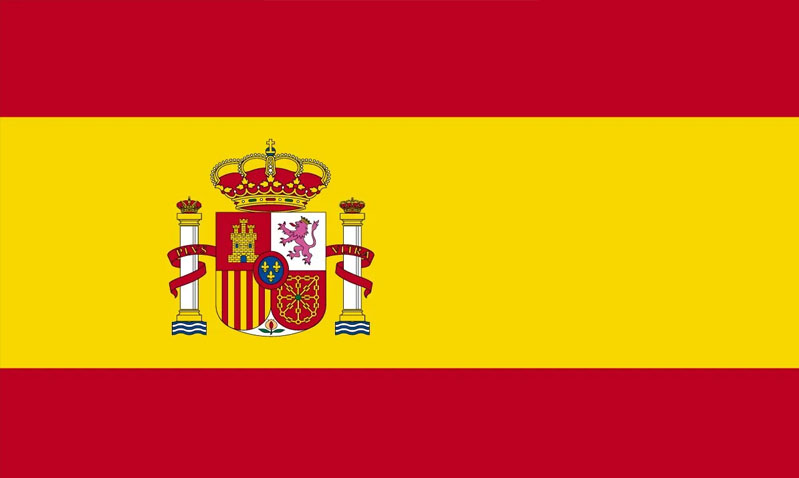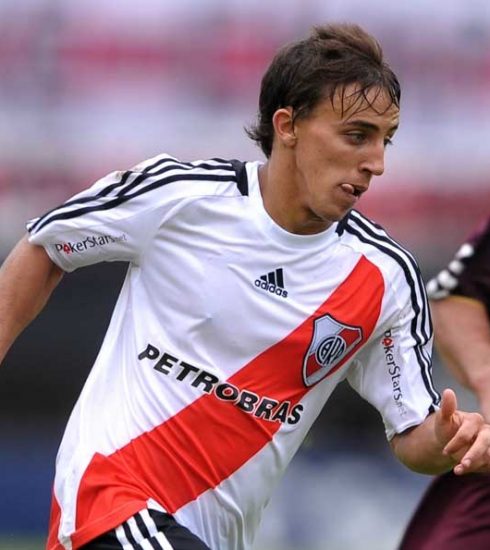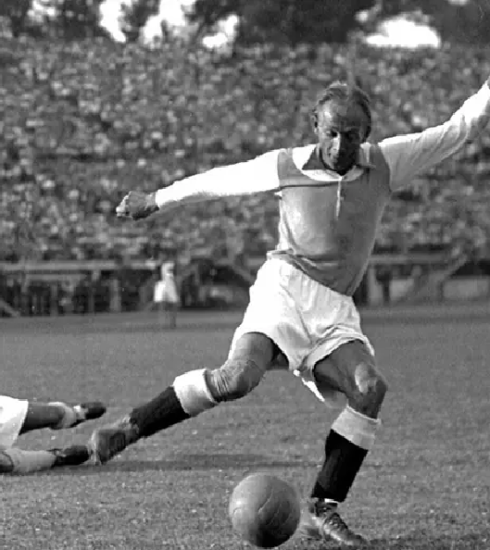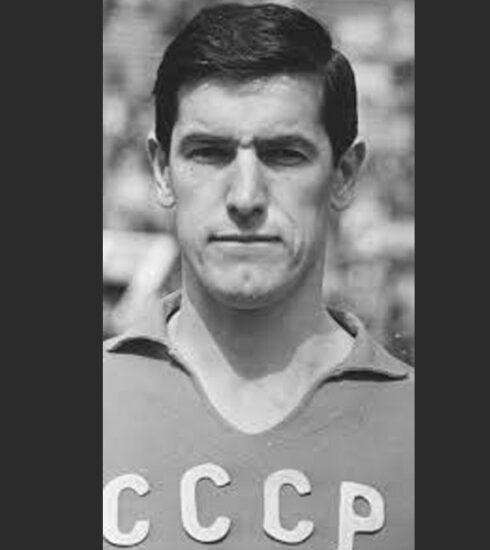WILLY DULLENS: Like Cruyff before Cruyff



It is 27 April 1966.
At ‘De Kujp’ in Rotterdam, the stadium of Feyenoord, a friendly match is being played between Holland and Belgium. The rivalry between the two national teams is overt and the 65,000 people in the stands are a clear confirmation of this.
These are two national teams that are young but are slowly finding their place at the top of European football.
In the ranks of Belgium there is already a great champion like Paul Van Himst and alongside him players with a sure future like Jan Verheyen and Wilfried Puis.
Amongst the ‘orange’ to nurture a new generation of talents is ‘Mister Feyenoord’ Coen Mouljin, but it is Piet Keizer, the Ajax left winger, and Willy Van Der Kuijlen, the PSV Eindhoven centre forward, who are the two at the centre of attention of press and fans.
At the end of the match (won by the Dutch by three goals to one), however, it was another young player who attracted the attention of the observers.
His name is Willy Dullens and he plays for a small Limburg club, Sittardia, which plays in the Eerste Divisie, the lower division of Dutch football.
He is a constant thorn in the side for the Belgian defence. He is petite (169 cm for 57 kg) and has dribbling and ball control as his best qualities.
In Holland he is already well known.
He is spoken of as the ‘new Faas Wilkes’, the great post-war Dutch centre-back who played a few seasons in Italy with Internazionale and Torino.
There are many who consider the young Dullens to be the technically strongest Dutch footballer ever.
Two weeks later the Netherlands are in Scotland for another friendly match.
It is played at Hampden Park where the Scots are annihilated by the class, pace and technique of the Dutch.
Piet Keizer, Willy Van der Kuijlen and Willy Dullens are uncatchable for John Greig and his teammates.
At the end of that championship, as every year, the award ceremony for the best Dutch footballer of the season takes place at the Hilton in Amsterdam. The names are of the highest calibre. Johann Cruyff, whose devastating arrival on the Dutch football scene impressed everyone. There is teammate Piet Keizer, a left winger of pure talent and superlative elegance. There is Feyenoord’s young midfielder Wim Van Hanegem and there are forwards of the value of PSV’s Willy Van Der Kuijlen (the tournament’s top scorer) and the other very young left-winger Rob Rensenbrink of little DWS, another tournament revelation. All names that tell of the imminent arrival on the world football scene of Dutch football, which in the following years would triumph four times in the Champions Cup (Feyenoord and Ajax three times) and at national level would reach two world finals.
The winner of the award, however, is himself: Willy Dullens.
He who plays for a team in the cadet league and has so far only played a couple of (brilliant!) matches with his country’s national team.
At this point, it is clear that Sittardia is certainly not the team that can afford to retain the man who, for all intents and purposes, is considered one of the greatest talents of his generation.
First it was the Belgians from Anderlecht who insistently knocked on the door of the Sittardia management.
With Dullens to inspire Paul Van Himst, Anderlecht would make enough of a leap forward to make it back to the top of European football.
But it is above all Feyenoord who are working hardest to bring Dullens to De Kuip.
“Indeed, ‘The People’s Club’ is convinced that Dullens is the right man to bring Feyenoord back to the top of Dutch football after the clear dominance of Ajax in the season just ended.
However, Sittardia have just moved up in the Eredivisie and have no intention of giving up what is the most important option to try and stay in the Dutch top division.
Dullens does not move and the venture succeeds. Sittardia played a season well above expectations, finishing 7th in the table.
In the summer of 1967, the court of Feyenoord (still second in the league behind Cruyff and co.) became very assiduous.
A bidding war began for Dullens’ badge.
Jean-Mark Bosman, however, was only a three-year-old child who had perhaps just begun to kick a ball around his Liège, and the ‘law’ that would bear his name and actually change the world of football would come almost thirty years later.
it is the clubs that decide the fate of the players and Sittardia proves to be inflexible.
It has no intention of parting with its only genuine star player.
A long ‘tug-of-war’ began between the two clubs over the price of Dullens’ card.
In the end, Feyenoord raised the white flag and Willy was forced to give up his move to the big club in Rotterdam.
A new season begins.
Sittardia are engaged in a summer friendly against Vitesse.
Willy Dullens asks to be exempted from the match.
His presence is requested at a very popular event such as the National Greyhound Race. It is he who is asked to award the winner.
Jan Notermans, the trainer of Sittardia, is inflexible.
Willy has to play.
Willy plays, scores a goal and halfway through the second half his Sittardia is ahead four goals to one. As has been the case for a few years now, there are many spectators who attend Sittardia games just to see him in action and delight in his dribbles and feints.
Dullens never disappoints. He doesn’t that day either. Not even on four-one.
Dullens picks up the ball, lifts his head and then is about to launch himself into one of his proverbial ‘slaloms’.
He makes a feint and then takes off again on the opposite side.
The opposing defender is disoriented.
It is a clumsy rather than violent intervention.
So much so that the referee does not even whistle for a free kick in favour of Sittardia.
Only, something is wrong.
The defender’s weight all ends up on Dullens’ leg.
The pain is excruciating, unbearable.
“Willy, this is where it all ends” the talented number 10 will admit to thinking at that very moment.
He is carried out by his teammates.
From this moment on, it will turn into a veritable farce where ignorance will be the rule.
For a start there is the club doctor who, contrary to Dullens’ wishes, ends up convincing him not to go to hospital.
‘Ice and rest Willy. In a week you’ll be back to your old self’ is the doctor’s advice-judgement.
A month later Dullens is back on the field.
He is only a pale stand-in for the former footballer.
He knows very well that there is something wrong with his knee.
He continues to play, is even fielded twice more with the senior national team against Czechoslovakia and Denmark.
At Sittardia they even make him out to be a ‘wayward child’ or an ‘imaginary sick person’.
Dribbling, his peculiarity, has disappeared from his game.
He plays first or at most with two touches and avoids any physical contact with the opponent.
Sittardia must save itself and cannot do so without Willy Dullens.
Even if he is only 50 per cent.
He will play four months, until the end of that championship.
When they finally decide to intervene, Dullens’ knee is in terrible condition.
He remains under the knife for eight interminable hours.
He resumes training, at the beginning of the following season he is back on the field.
A ghost. Fourteen games, only one goal and anonymous performances.
Then, in December of that 1968 and after seven more useless operations on his tortured knee, the sentence came, final and unequivocal: football, at only 21 years of age, was a chapter in Willy Dullens’ life that would close forever.
Of him, Johann Cruyff, with whom Dullens played several games in the Dutch youth team, also forging a friendship that would continue over the years, would say that ‘Willy is probably the only footballer I have met who was more talented than me’.

ANECDOTES AND TRIVIA
Dullens’ childhood is common to many Dutch boys of the period. The father in the mines, the mother at home bringing up the children and for the boys only one possible recreation: football.
Willy is obsessed with football. It is said that he played it every spare minute of the day, with his brothers and friends but also on his own, with the aim of continually improving his technique and ball touch.
He was capable of dribbling for hours.
One day his father asked him what his personal dribbling record was.
“Three thousand five hundred consecutive,” Willy replied.
He went up to six thousand. Then he stopped, convinced as he was that no one could do better …
In 1968 the Dullens family set a record, still unbeaten at least in Holland.
Three brothers together in the same team, Sittardia, in an official match!
Zef and Luois in fact also became very good footballers.
Throughout his career Willy Dullens will admit that he did not touch a drop of alcohol or smoke a single cigarette. “I actually lived like a monk. By 10pm at the latest he was in bed. The very few times I messed up the schedule I played so badly that I decided it would never happen again,’ he said of himself in an interview several years later.
In his first season in the first team of Sittardia Dullens scored 18 goals, winning the top scorer’s table in the Eerste Divisie, the Dutch cadet league. These are the goals that will allow his team to return to the Dutch top flight.
… And Willy Dullens is a midfielder.
In his first season, the story goes that in a match against SC Veendam Dullens took the ball inside his own penalty area and started dribbling his opponents. He ran the length of the pitch with his foot, skipping seven before sending the ball into the back of the net.
The enthusiasm was such that there was a festive pitch invasion with fans wanting to hug Willy and congratulate him.
It is said that even the referee of the match stopped to applaud …
Already in that first season, his talent shone through. At the Sittardia matches, the audience increases with each match. There are in fact more and more neutral spectators who go to the matches of the small Limburg club just to see the young number 10 in action.
For a certain period of time in the Dutch youth team, Dullens shares the field with a young boy from Amsterdam, two years younger than him, but whose talent has already set the pace: his name is Johann Cruyff.
He is the centre forward of that national team, while Dullens is its director.
‘Together we never lost a game,’ Dullens proudly recalls of that happy period.
At the end of the match between Holland and Belgium in which Dullens made his debut at the end of the game, the two teams, players and managers, meet together for dinner in a restaurant in Rotterdam.
When the Dutch coach Georg Kessler introduced his young rookie at the table, all those present stood up and gave him a long round of applause.
Dullens would later recount that it was one of the best moments of his entire career.
“Champions like Paul Van Himst or Piet Keizer standing up and applauding a young boy on his debut with his country’s national team is not something that happens every day,” Dullens proudly said.
Ending his career so prematurely and with an almost certain future at the highest level was, understandably, far from easy to accept for Dullens, who fell into a deep state of depression from which he struggled to recover some time later.
In August 1969 the Dutch federation decided to organise a friendly match between Ajax Amsterdam (apparently strongly desired by Johann Cruyff) and Alemannia Aachen, who had just finished their Bundesliga season in second place.
It is Willy Dullens’ farewell match from football and the proceeds of the match will be all for him, to partially compensate for what misfortune took away from him: namely the chance to experience the golden era of Dutch football of which Dullens would have been an absolute protagonist.
At the Olympic Stadium in Amsterdam there were 60,000 people there to greet a champion to whom Lady Luck had turned her back.
With the proceeds of the match Dullens decided to open a barber shop … soon becoming extremely popular and attracting many football fans curious to know his story and the anecdotes of a career destined for the top.
In 2000, the football world finally remembered him.
His club Sittardia, which in the meantime had become Fortuna Sittard, offered him the position of Technical Advisor with the task of looking after the youth sector in particular.
In the 2009-2010 season he will move to VVV-Venlo, another Dutch professional team, with the same duties he had at Fortuna, adding also that of scouting young promising players.
He is often asked, even today, if he was really stronger than Johann Cruyff.
“All I know is that I could do exactly what he did on the pitch. And if you don’t believe that, give me a football now!” jokes Dullens every time he is asked this question … although even today, at 75 years old, there are those who swear they have seen Dullens still take five hundred “keepy-ups” …






